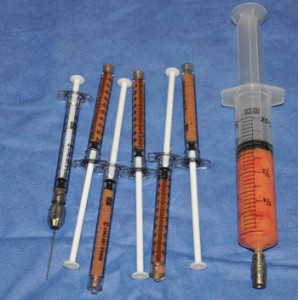Lipoatrophy is a well knownside effect that can occur in patients who have been treated with antoretroviral therapy for HIV. The devastating facial changes that occur with progressive loss of facial fat has a very negative impact on the quality of life for those so affected. Two basic treatment strategies have been used for facial volume improvement including the historic use of synthetic fillers (poly-L-lactic acid, Sculptra) and, more recently, fat transfers.
Fat grafting has significant advantages over the use of any synthetic filler for a variety of aesthetic and medical conditions, including lipoatrophy. Despite the appeal of fat grafting, there are understandable concerns about how well it will work and how durable it might be. In a disease condition like facial lipoatrophy in HIV, one can not help wonder how could injected fat hold up when the underlying condition that is being treated is a fat wasting process.
In the March 2013 issue of Plastic and Reconstructive Surgery, an article was published entitled ‘ Autologous Fat Grafting and Injectable Dermal Fillers for Human Immunodeficiency Virus-Associated Facial Lipoatrophy: A Comparison of Safety, Efficacy, and Long-term Treatment Outcomes’. A literature review was done of 19 published studies which comprised 724 patients, 549 which were treated by synthetic injectable fillers and 175 by autologous fat injections. Patient satisfaction and effectiveness was similar between the two injection treatments. The use of Sculptra was associated with a reinjection rate 3X that of fat and had a subcutaneous nodule formation of 22%.

In an accompanying discussion to this paper, two important points were brought out. First, patients need to appreciate that facial fat loss is progressive to the point that wasting of all native facial fat will eventually occur. So even though fat grafting is done, and all injected fat may even survive, postoperative facial volume may still occur to some degree. Second, donor site harvests for fat should come from non-wasting fat areas such as the mounds along the anterior mammary ridges and their corollaries on the back.
Dr. Barry Eppley
Indianapolis, Indiana


